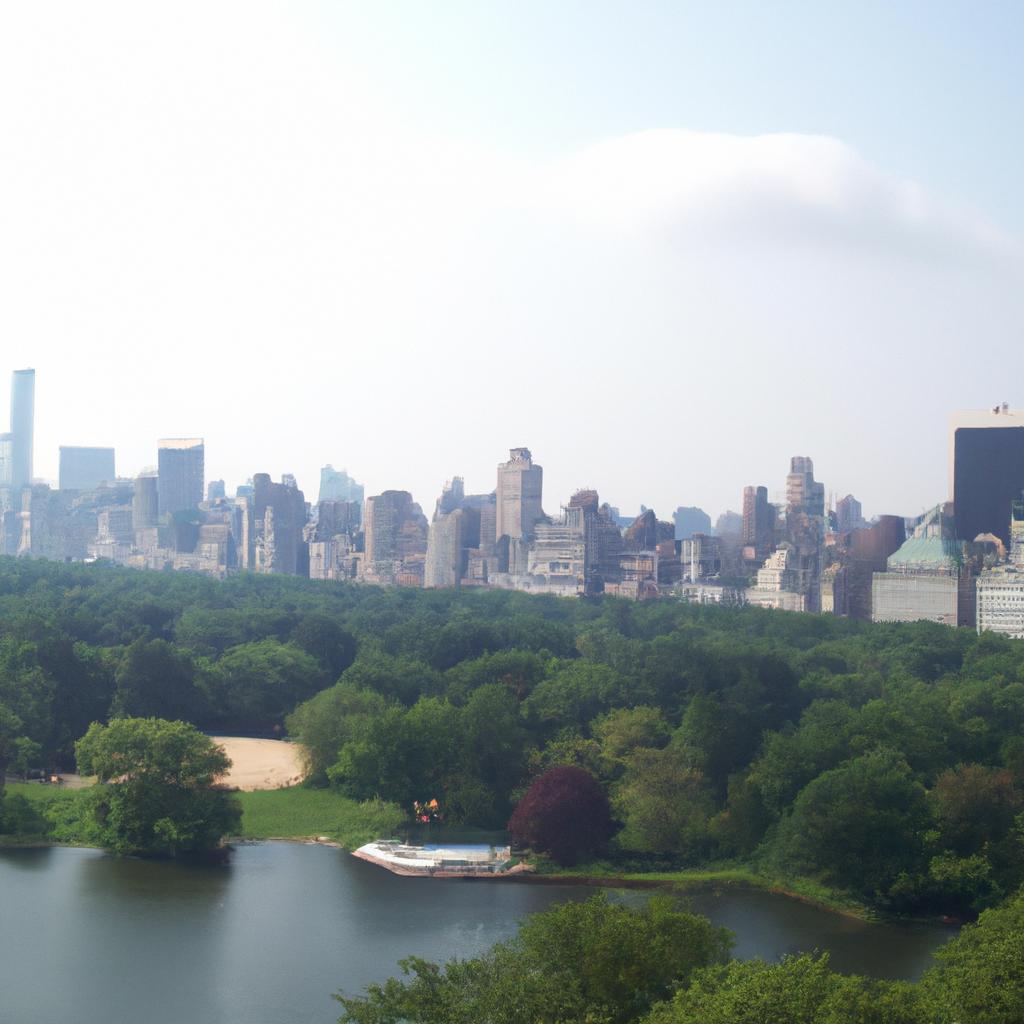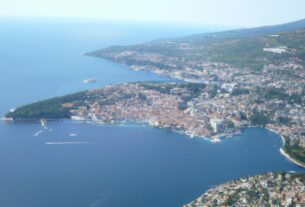Central Park, a renowned symbol of New York City, is not just any ordinary park. Its immense size and significance make it a must-visit attraction for tourists and locals alike. But have you ever wondered just how big Central Park really is? Understanding its dimensions is crucial to fully grasping the scale and impact of this iconic green space.
A Brief History and the Significance of Central Park
Central Park, designed by Frederick Law Olmsted and Calvert Vaux, first opened its doors in 1858 as the nation’s first landscaped public park. It swiftly became a cherished haven for New Yorkers seeking solace from the city’s frenetic pace. To this day, Central Park spans a staggering 843 acres and draws over 42 million visitors annually.
Unveiling the Importance of Central Park’s Size
Comprehending Central Park’s vast size is vital for visitors to truly appreciate its magnitude and significance. Knowledge of its dimensions allows visitors to plan their visit accordingly, ensuring they have ample time to explore its myriad attractions. Furthermore, recognizing the park’s size puts into perspective the extraordinary engineering and design required to create such an enormous, unparalleled public space amidst one of the world’s largest cities.
In this article, we will delve into the methods employed to measure Central Park, compare it with other renowned parks worldwide, highlight popular areas within the park, and explore the impact of its immense size on visitors and the city at large.
Deciphering Central Park’s Dimensions
Central Park’s size is quantified in acres and square footage. The park encompasses a staggering 843 acres, equivalent to 6% of Manhattan’s total land area. Its dimensions span approximately 2.5 miles in length and 0.5 miles in width, stretching from 59th Street to 110th Street and from Fifth Avenue to Central Park West.
Determining Central Park’s Size
Central Park’s dimensions were established through a combination of surveys and calculations. In the early 19th century, John Randel Jr. conducted a survey to delineate Manhattan Island, encompassing the future grounds of Central Park. This survey formed the boundaries of the park.
To calculate the park’s size, the acreage of each individual parcel of land within Central Park was combined. This intricate process involved determining the precise boundaries of each parcel and accounting for any irregularities in the landscape.
Understanding Acreage and Square Footage
An acre, measuring 43,560 square feet, serves as the unit of measurement for land area. Central Park’s total acreage of 843 acres equals approximately 36,778,680 square feet. Within this vast expanse lie a diverse array of flora, fauna, recreational facilities, and landmarks, all waiting to be explored.
Grasping the methodologies employed to determine Central Park’s dimensions and the significance of its acreage and square footage is crucial for visitors to fully comprehend the park’s scale and scope.
Central Park in Comparison to Other Parks
While Central Park may not hold the title for the largest park globally, it boasts unique features that set it apart from the rest. Let’s take a glimpse at other renowned parks worldwide and observe how they measure up against Central Park.
Hyde Park, London
Hyde Park, spanning 350 acres, occupies an esteemed place among London’s largest parks. Though smaller than Central Park, it remains a beloved destination for both locals and tourists. Hyde Park is home to iconic landmarks like the Serpentine Lake and the Diana, Princess of Wales Memorial Fountain.
Stanley Park, Vancouver
Stanley Park, covering 1,001 acres, stands as one of North America’s largest urban parks. A nature lover’s paradise, it captivates outdoor enthusiasts with attractions like the Vancouver Aquarium and the Stanley Park Seawall.
Bois de Boulogne, Paris
Bois de Boulogne, stretching over 2,000 acres, claims its spot as one of Paris’ largest parks. An idyllic haven for Parisians and visitors alike, it offers a plethora of attractions, including a botanical garden and a zoo.
Central Park’s Unique Charm
Although Central Park may not take the crown for being the largest park globally, it undoubtedly possesses an unparalleled charm. Its prime location in the heart of New York City renders it a magnet for both locals and tourists. The park’s size and diversity allow for an array of activities, making it a versatile space for recreation. Moreover, Central Park boasts iconic landmarks such as the Central Park Zoo, the Great Lawn, and the Bethesda Fountain, adding to its inimitable allure.
Navigating the Expansiveness of Central Park
Central Park’s expanse can be a daunting landscape to navigate. To ensure a fulfilling visit, here are some tips for exploring the park and experiencing its most popular areas.
Helpful Tips for Exploring the Park
- Plan your visit: Before venturing into Central Park, take a moment to plan your visit. The park’s official website provides invaluable insights into its offerings, helping you chart your course accordingly. Consider downloading a park map or utilizing a navigation app to assist you during your exploration.
- Wear comfortable shoes: With over 58 miles of walking trails, it’s essential to don a comfortable pair of shoes. Opt for sneakers or hiking shoes, and be sure to dress appropriately for the prevailing weather conditions.
- Stay hydrated and energized: Exploring Central Park can be a physically demanding endeavor. Remember to bring a refillable water bottle and some snacks to keep yourself well-hydrated and fueled throughout your adventure.
- Make use of park amenities: Central Park brims with amenities to enhance your visit. Keep an eye out for restrooms, water fountains, and picnic areas scattered throughout the park.
Noteworthy Areas to Visit
- Bethesda Fountain: Nestled in the park’s heart, Bethesda Fountain stands as one of Central Park’s most iconic features. Capture memories in front of this magnificent landmark.
- The Great Lawn: The Great Lawn attracts numerous visitors, offering vast space for picnicking, sunbathing, and people-watching.
- The Central Park Zoo: Catering to animal enthusiasts, the Central Park Zoo boasts a diverse lineup of creatures, ranging from penguins to snow leopards.
- The Conservatory Garden: Located on the Upper East Side, the Conservatory Garden provides a serene sanctuary adorned with breathtaking flowers, fountains, and sculptures.
Armed with these useful tips and knowledge of popular areas to visit, you’re well-equipped to embark on an extraordinary Central Park expedition.
Central Park’s Impact on Visitors and the City
Central Park’s size plays a pivotal role in its popularity and impact. In this section, we will explore how its dimensions shape visitors’ experiences and contribute to the city’s overall fabric.
The Role of Size in Central Park’s Popularity
Central Park’s expansive size serves as a magnet for visitors near and far. Its vast green spaces offer an escape from the urban environment, while its diverse attractions cater to a wide range of activities for individuals of all ages. The park’s size also enables it to host concerts, festivals, and sporting events, with ample space for large crowds without feeling overcrowded. In turn, this fosters a sense of community and solidarity.
Central Park’s Impact on Visitors and the City
Central Park’s immense proportions undoubtedly impact both its visitors and the city as a whole. Its sheer size can initially overwhelm visitors, posing challenges to navigation. However, this expanse also instills a sense of adventure, enticing visitors to explore its hidden gems and lesser-known corners.
For the city, Central Park’s size plays a vital role in enhancing the overall well-being of its residents. The park’s generous green spaces offer a sanctuary for relaxation, exercise, and communion with nature—an invaluable respite from the concrete jungle that surrounds it. Additionally, Central Park’s diverse ecosystem sustains numerous bird species and wildlife, offering urban dwellers a rare opportunity to cherish the beauty of the natural world.
In conclusion, Central Park’s size lies at the core of its popularity and significance. It provides an escape from city life and invites visitors on an adventure within one of the world’s most bustling urban environments. As a testament to the ingenuity of design and engineering, this iconic green space continues to enchant and inspire millions of visitors each year.
Central Park, with its sprawling greenery and array of attractions, stands as an emblem of tranquility amidst the concrete jungle of New York City. Stretching across an impressive 843 acres, this iconic urban oasis beckons you to immerse yourself in its beauty and grandeur.
Don’t miss the opportunity to encounter the wonders of Central Park firsthand. As a nature and gardening enthusiast, this park should undoubtedly top your list of must-visit destinations. Discover why Central Park holds its place as one of the world’s most beloved and renowned parks. Embark on an unforgettable journey that will leave you with cherished memories of this extraordinary natural sanctuary.
For more information about Central Park and its attractions, visit TooLacks, where you can find valuable insights and resources to plan your visit.



